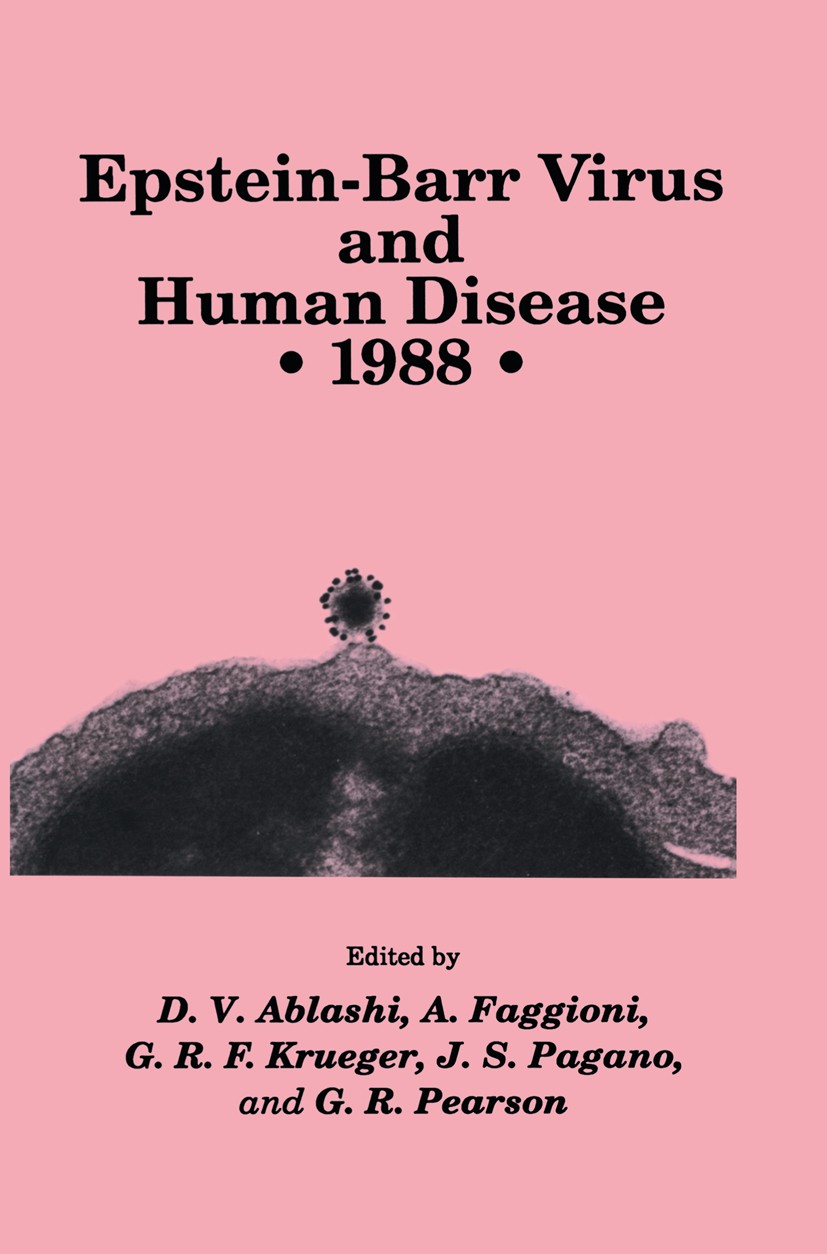| 书目名称 | Epstein-Barr Virus and Human Disease • 1988 | | 编辑 | Dharam V. Ablashi,Alberto Faggioni,Gary R. Pearson | | 视频video | http://file.papertrans.cn/314/313408/313408.mp4 | | 丛书名称 | Experimental Biology and Medicine | | 图书封面 |  | | 描述 | Epstein-Barr virus (EBV) is one of the most widespread human viruses, with over 80% of the general population exposed by young adulthood, as determined by antibody studies. Initial infection usu ally occurs during childhood or the teenage years. It is clear that, de pending on the age of the recipient, clinical manifestations of the primary infection can vary. It has been known for 20 years that EBV is the etiologic agent of acute infectious mononucleosis (IM) and is also closely associated with African Burkitt‘s lymphoma (BL) and naso it is a pharyngeal carcinoma (NPC). There is increasing evidence that factor in the etiology of B-celllymphomas, which arise at a high fre quency in immunodeficient populations. EBV may also contribute to the development of autoimmune disease. Thus, this virus continues to attract world-wide attention. The major target cell for EBV infection has now been conclusively identified as the complement receptor-type 2 (CR2), the Cd/Cdg 3 3 receptor on B lymphocyte. It is apparent, however, that other cells also can become infected by EBV, such as epithelial cells in the parotid gland and other epithelial cells in the upper respiratory tract. This might | | 出版日期 | Book 1989 | | 关键词 | DNA; Promoter; cell lines; gene expression; genes; molecular biology; phorbol ester; transcription | | 版次 | 1 | | doi | https://doi.org/10.1007/978-1-4612-4508-7 | | isbn_softcover | 978-1-4612-8852-7 | | isbn_ebook | 978-1-4612-4508-7 | | copyright | The Humana Press Inc. 1989 |
The information of publication is updating

|
|
 |Archiver|手机版|小黑屋|
派博传思国际
( 京公网安备110108008328)
GMT+8, 2025-12-25 09:11
|Archiver|手机版|小黑屋|
派博传思国际
( 京公网安备110108008328)
GMT+8, 2025-12-25 09:11


